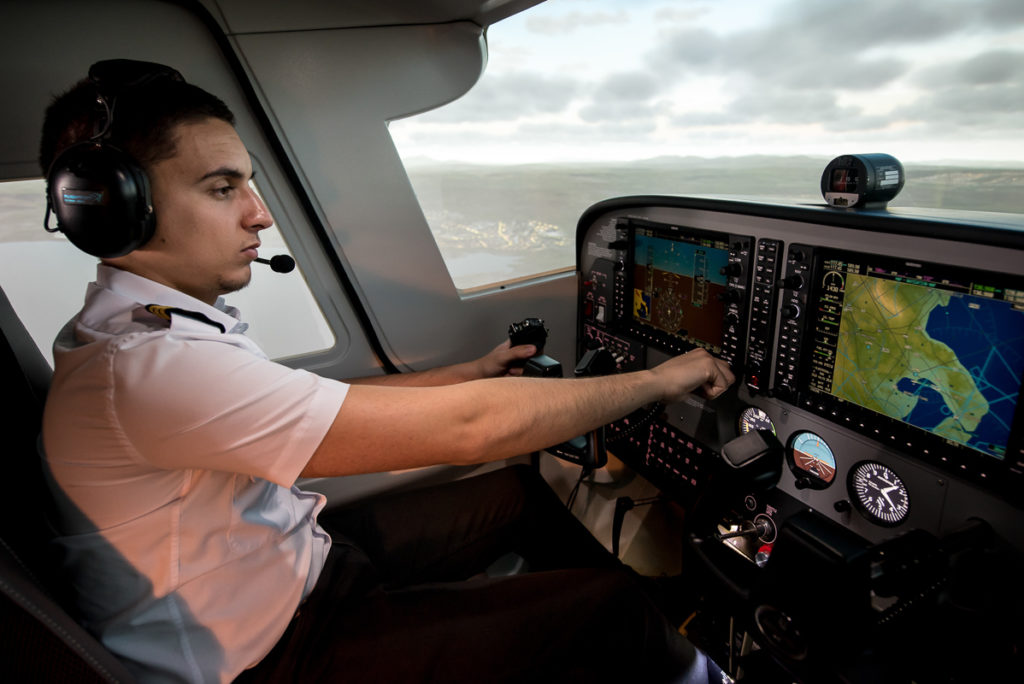Estimated reading time 6 minutes, 48 seconds.
I want to start by saying this article is primarily for those pilots who don’t fly IFR on a regular basis, also known as OIPs (occasional IFR pilots). You will note that acronym is very close to OOPs, which none of us want to happen in the air.
As the acronym implies, OIPs tend to fly IFR occasionally and find it just a bit uncomfortable. Some would even say unnerving. I also realize that the title of this column is a bit ambitious… trying to cram “all you need to know about IFR flying” into a few paragraphs. Please bear with me.

One of the most common comments I get from OIPs is that they tend to get behind the airplane in an IFR environment, and end up feeling compromised and rushed at destination. I ask them three questions. First, how much time do they spend practicing IFR on a sim (desktop or otherwise) and, more specifically, inputting the actual approach and airport they will be landing at? Second, how much time do they spend studying the IFR enroute map and approach plate beforehand? And third, what are the specific A/I and power settings for climb, cruise, descent, hold, and final approach? It is usually little sim time for point one, a quick glance for point two, and little accurate knowledge for point three. All of which is not surprising given that their main job is usually not flying.
All three points have very manageable fixes. One of the beautiful things about IFR flying is that it is, for the most part, very predictable. ATC goes to great lengths to ensure an orderly flow of traffic, and that is based upon the publication of clear rules and procedures to be followed at every stage — from flight planning to closing the flight plan. Before you leave the ground, you should be very well versed in what is required at each stage of flight, from instrument settings to approach plates.
Let’s cover point three to begin. In effect you have only the five IFR phases of flight mentioned above. If you don’t already know the power and A/I settings for each of these phases, take a VFR flight in your aircraft and go through a simulated IFR profile, ensuring you keep track of the required parameters.
Wherever you are flying, you should come up with something like this:
Going back to the title, that really is all you need to know to make the actual piloting a lot easier. Once you know these settings cold, it’s a matter of using the correct ones when required, and trimming aircraft to “hands off” at each stage. If done properly, the aircraft will basically do the flying without having the pilot chase the performance instruments across the sky.
On that point, do NOT chase the performance instruments. It is a common mistake for OIPs — because they are rusty — to chase the vertical speed indicator or airspeed indicator, or other performance instrument. And if you’ve forgotten the basic concept of control and performance instrument flying technique, it’s time to do some catch-up reading, as it will make your life so much easier — at least in the air.
Now, to point two, how much route study do you do? That doesn’t mean you’re going to fly V310 to the Somerset beacon and thence an approach. It means knowing where along that route you are planning to climb to, and the point of descent. That way, you can anticipate the power and A/I settings before you even leave the ground. It means knowing what comm and nav channels will be required along the way, and at what point you will be handed over from one controller to another. Not to mention having these written down and/or stored on an electronic device so they are readily available when required.
And finally, to address point one. How much time have you spent in a sim of any sort? These days, the proliferation of computer sims for PCs and Macs has made it possible for anyone to practice their approaches with a wide variety of weather inputs and navigation information. It’s even to the point of doing a bit of research and downloading your aircraft type, and customizing the instrument panel layout to fit your specific airplane.
Interestingly enough, I was watching a YouTube video of the shuttle astronauts while in orbit practising what would be their entry and landing profile on a laptop. If those folks are using laptop sims, maybe it’s time you have a looksee as to what is available for you. Like almost everything else, practice makes perfect.
Ted Delanghe is a former Air Force pilot turned business consultant, with a special focus on aviation and aerospace. He has flown over 50 aircraft types from ultralights to fighters, and holds a current ATP. He resides in Regina, Saskatchewan.